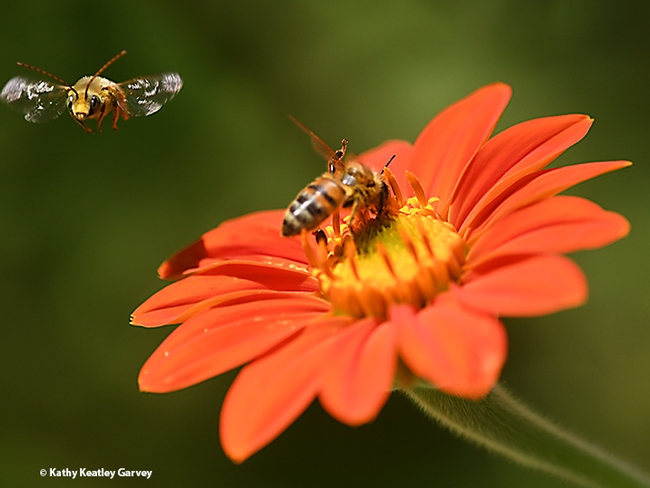So, here you are, a honey bee nectaring on a Mexican sunflower, Tithonia rotundifola.
All's right with the world, at least in your world. You're sipping nectar to take home to your colony and suddenly...a buzz.
A male long-horned bee, probably Melissodes agilis, is trying to dislodge you from your flower.
You hold your ground (your flower) but you let him know that his presence is unwanted. You lift a foreleg in your defense to block him.
The long-horned bee flies off, and you continue to nectar. All's right with the world. (Until your next encounter with a fast-moving, highly territorial male long-horned bee bent on dislodging you from your flower.)
The late Robbin Thorp (1933-2019), distinguished emeritus professor of entomology at UC Davis, used to say that these male long-horned bees target any critter residing on "their" flowers. It could be a honey bee, a bumble bee, a carpenter bee, a syrphid fly, a butterfly or a beetle. Or something else. They want to save the flowers for their own species and then mate with them, he said.
Just a day in the life of a non-native honey bee, Apis mellifera, and a native long-horned bee, Melissodes agilis.
Attached Images:

A male long-horned bee, Melissodes agilis, targets a honey bee nectaring on a Mexican sunflower, Tithonia rotundifola. This was shot with a shutter speed set at 1/5000 of a second. (Photo by Kathy Keatley Garvey)

The honey bee lifts a foreleg in defense as the long-horned bee takes flight. Image shot at 1/5000 of a second. (Photo by Kathy Keatley Garvey)